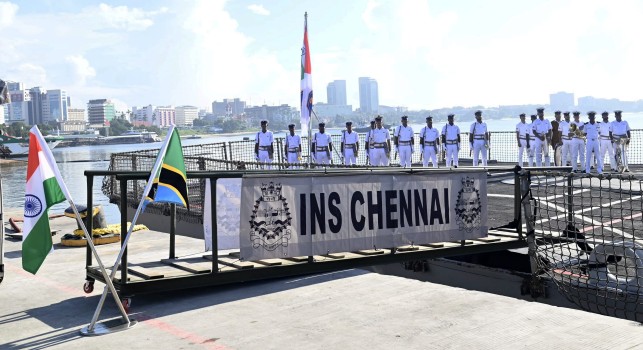
A file photo.
KUALA LUMPUR (PTI): A dangerous arms race is fast spreading in Asia due to the proliferation of naval weaponry, according to a top Australian expert, who warned that the expansion of China's atomic arsenal could prompt others in the region to exercise their nuclear options.
"The proliferation of weapons of mass destruction and long-range missile systems is now proceeding much more rapidly and extensively in Asia than in any other part of the world," Des Ball of the Australian National University's Strategic Defence Studies Centre told an international gathering here.
He told an Asia-Pacific Roundtable conference, organised by the Institute of Strategic and International Studies, that China could have its first aircraft carrier at sea within a year and that the first 50 pilot cadets were inducted at the Dalian Naval Academy in 2008 to start training on what was reported as "ship-borne aircraft flight".
"The expansion of China's nuclear arsenal could also cause other countries in northeast Asia to exercise their own nuclear options," he warned.
Ball underlined that the arms race was much more complicated and a potentially more volatile process than the bipolar superpower strategic nuclear arms race of the Cold War period, adding that East Asia was embroiled in a serious maritime strategic competition.
Hideaki Kaneda, a retired Japanese vice-admiral, now director of the Okazaki Institute in Japan, said China had begun "acquiring capability for missions beyond the Taiwan issue to perform operations in areas more distant from China's shores", The Australian newspaper reported.
Participating in the discussion, Zhang Junshe, vice-president of China's Naval Research Institute, said there was "no discernible naval arms race, but modernisation".
"China pursues a national defence policy which is purely defensive in nature, and implements a strategy of active defence," he said, adding "Where conflict threatens our national interests, a strong navy can deter the ambitions of aggressors and protect our citizens while working to maintain good order at sea."
Ball said that during the 1980s and 1990s, Asian countries spent on replacing obsolescent equipment and modernisation.
This century had seen the rise of "action-reaction dynamics", shown by the acquisition of destroyers and frigates; large amphibious transports, helicopter carriers and "sea control ships"; submarines and anti-submarine capabilities; sea-based air and missile defence platforms; and electronic warfare systems.
China now had 62 attack submarines compared with the US's 53, Ball was quoted as saying by the Australian daily.
Taiwan had acquired 14 new frigates and four guided missile destroyers, while South Korea had built the first of three Aegis-equipped destroyers, and was constructing nine German-designed submarines.
During the more predictable, bipolar Cold War situation, there were numerous arrangements, constraints and firebreaks, he said.
Now, however, "there are no arms control regimes whatsoever in Asia that might constrain or constrict acquisitions, which since 2000 have all been aimed at one or other particular neighbour", Ball said.
 Previous Article
Previous Article Next Article
Next Article












The Indian Air Force, in its flight trials evaluation report submitted before the Defence Ministry l..
view articleAn insight into the Medium Multi-Role Combat Aircraft competition...
view articleSky enthusiasts can now spot the International Space Station (ISS) commanded by Indian-American astr..
view article